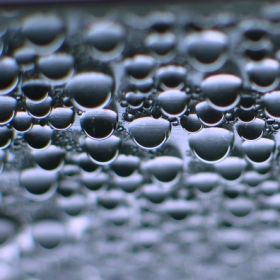Incremental improvements in water sustainability are not enough to close the future gap between increasing freshwater demand and decreasing freshwater availability in the western United States. This water scarcity gap is increasingly evident in the steady and long term decline of important aquifers and their projected inability to provide water for future agricultural irrigation, projected declines in states’ abilities to meet legal water delivery obligations between states, degradation of aquatic ecosystems and ecosystem services, and projected shortages of water for energy production.
The “Transformational Solutions for Water in the West” roundtable discussion explored mitigation measures that can narrow future gaps and identify what technical and policy solutions can be implemented to offer transformational non-linear improvements with regard to freshwater sustainability. These ideas discussed were part of a larger attempt to address the gap between demand and supply of fresh water, and such ideas are urgently needed to improve the systems of water management currently in place.
Additional Content Full Agenda
Related Resources The United (Watershed) States of America News Mentions |
In many cases, mitigation measures that can close the water scarcity gap can be identified and pursued, but in most of those cases the solutions simply shift the gap from water to some other sector, often economics. Saline, brackish or produced water purification, for example, could solve western water shortages, but will be expensive, and so shift the gap from water to economics. Large decreases to agriculture in some arid basins, such as the Middle Rio Grande, can help close the water scarcity gap in those regions. However, loss of agriculture will shift the gap to a loss of agricultural economic activity, and could create a more important future gap in regional food security. All these gaps, whether in water, economics, food security, or other sectors, have a negative impact on Western states. With recommendations from experts in the field, as well as a keynote presentation from Senator Tom Udall, this roundtable addressed the following key questions:
- Will incremental improvements in water sustainability be enough to close the future gap between increasing freshwater demand and decreasing freshwater availability in the western United States?
- What are the transformational technical and policy solutions to freshwater sustainability for agriculture, energy production, urban and rural residential consumption, industry, and the environment?
- Which transformational solutions are already being implemented? Can they be scaled up?
- Are there examples of transformational solutions being implemented with other resources? Can they be transferred to water?
- What attributes have made existing technical and policy solutions successful? What are their risks, and how can they be better managed? What are the obstacles to their implementation?
- What roles should science, industry, government, and citizens play?
Selected Papers and Presentations
Hector Gonzalez, Government Affairs Manager, El Paso Water Utilities
Melinda Benson, Assistant Professor, Department of Geography and Environmental Studies, University of New Mexico
Barbara Cosens, Professor, University of Idaho College of Law
Max Yeh, Principal Researcher, Percha/Animas Watershed Association
The Traveler’s Dilemma: Logic and Illogic in New Mexico’s Water Laws
Download the Paper
Molly Blumhoefer et al., Geography Instructor, School of Math, Science and Engineering, Central New Mexico Community College
Reed Benson, Chair, Natural Resources Committee, University of New Mexico Law School
Vincent Tidwell et al., Distinguished Member, Technical Staff, Sandia National Laboratories
Jesse Roach et al., Hydrologist, Earth Systems Analysis, Sandia National Laboratories
Michael Hightower et al., Distinguished Member of the Technical Staff, Sandia National Laboratories
Arnim Wiek et al., Associate Professor, Decision Center for a Desert City, Arizona State University
